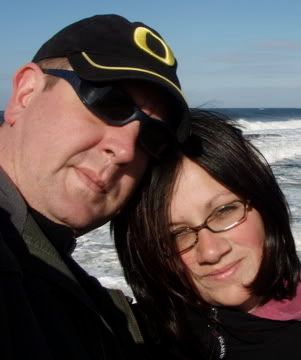
Classic colonial and contemporary constructions collide on a pedestrian street (calle) popular for strolling and celebrating, as you will soon see, in the historic district.

Beautiful (linda) public spaces and sculptures are nestled throughout the city (ciudad).

This fountain, surrounded by local artisans vending their work, commemorates the approval of Uruguay’s government on April 29th, 1868.
Traveler Test #1: At approximately 25 Uruguayan pesos per $1, 100 pesos is about $4, and 1000 pesos is around $40. Here are some typical prices: baguettes of bread @ 15 pesos each, mozzarella cheese @ 90 pesos/kg, and good beer @ 35 pesos/liter. Kilograms are 2.2 pounds and liters are 33.8 fluid ounces. Do the math? Is it a good or bad (bien o malo) deal?
Small groceries thrive on every corner. Unlike American convenience stores, most have fresh fruits and vegetables outside, and inside, everything else one might need—breads, meats, dry and frozen goods, beverages from milk (leche) to booze, home products to beach gear—crammed into a space no bigger than a bedroom. However, Montevideo has two major malls that rival any in the United States, and there are major supermarkets serving every neighborhood and small town.






Nice pictures, eh? The produce photos were taken in early evening in La Paloma while the Patricia beer shot, featuring a typical liter of Uruguay’s favorite cerveza, was clicked in Punta del Este—two wildly popular summer coastal destinations for folks from every South American country. And, although beef is a staple, they also enjoy chicken. Don’t worry, that rooster is not running from the market butcher—he’s cock-a-doodle-doo-ing fine on a farm we visited on our way to Cabo Palonio—another epic locale on the Atlantic! Although mostly rural, Uruguay is far from third world.
Back in Montevideo, before exploring the coast, breakfasts began aloft our hotel, lunches at local sidewalk eateries and supper at outdoor beachfront or downtown rooftop restaurants. We met Lourdes and enjoyed Spanglish conversation that improved with every drink. The rare moments without Justo were spent wandering the winding avenues and waterfront walkways, taking pictures…

Mmmm...coffee and croissants, grains and yogurts, juices and fruits, eggs and potatoes (huevos y papas).


Four blocks from our flat you find Punta (Point) Trouville—a rocky outcropping separating two beaches, Playa de Estacada, seen above, and Playa de los Pocitos, seen below. My personal supermodel is doing her job while locals don’t do theirs and enjoy the sun and sailing.



The Rambla—the waterfront boulevard—and its companion pedestrian walkway divide Pocitos from a palm filled park and National Naval and Weather Station. Facing north toward town, masonry melds with modernity, where Uruguay’s Mason Association counters the condominiums. Behind this castle and caravel combination we found more spires standing sentry over the ornate wooden gate of the Restaurant Museum (museo). Scouting south, we spied a snowy white egret pecking fish (pez) and bugs (bichos) in Rio de Plata’s murky wind-driven surf.


My Mazatlan cap--a Beijing souvenir from my mother (madre)...don't ask—matches the blue (azul) sky over Playa de los Pocitos. Here, during January, buildings outnumber bathers because Uruguay boasts many bustling beach towns bursting with bikinis! Her espresso break over, my model resumes her duty making my photos beautiful.


Crossing the Rambla to a small monument park, pigeons pause for awhile, and we pose with a smile, just a few blocks from our apartment building (edificio)...

The day before we would meet the owner and sign our lease, curiousity drew us to preview our new home (casa). Unaware that every apartment employs a doorman, we met Sergio!

Unfortunately, due to an impenetrable language barrier, our initial meeting was awkward—we could not communicate that we were becoming tenants and hoped to scope out our new home. Feeling stupid, we left. But, when we saw Sergio the next day, accompanied by the owner, the ultimate bi-lingual “a-ha” moment was exchanged in smiles and laughter. Now, Sergio opens the door with a welcoming wave of his arm..
Feel free to post your comments at the bottom of every blog entry! If you want to e-us personally, our individual addresses are listed in our first entry, "A Very New Year..." , or more info about us can be found in our profile at the top of this blogsite!
In our next entry, witness a New Years celebration when it's summer...
Answers to Traveler Test #1: Baguettes (flautas) of bread (pan) are about 60 cents. Cheese (queso) is around 40 cents per pound. Beer (everyone knows this Spanish word) is about 1 peso per fluid ounce, let’s see…50 cents a bottle or $3 per six-pack, or $12 per case! And, like Oregon, Uruguay has a hefty bottle deposit law to encourage recycling!

2 comments:
hola cu~nados! Que fotos tan lindos! Cuidanse mucho. con amor, -susana y jonathan
hola Adam y Leandra...
Just wanted to say I am really enjoying your journalistic talents as you write and photography your great adventure. I'll keep tuned to this channel as the story continues...
-phil
Post a Comment